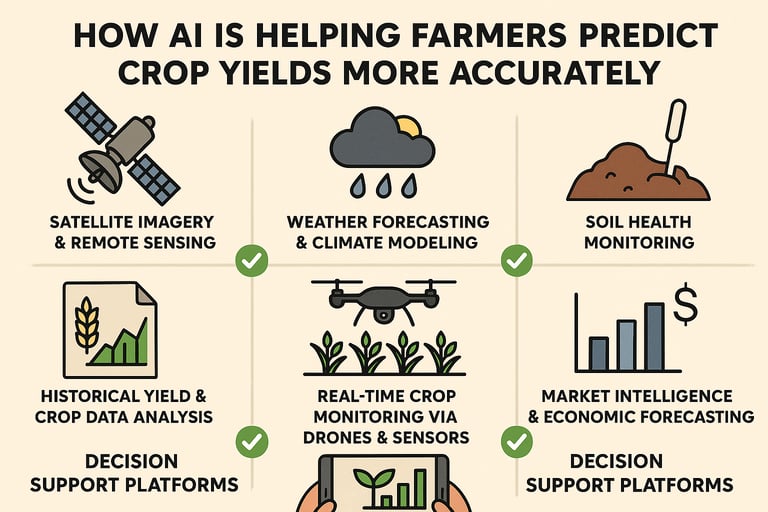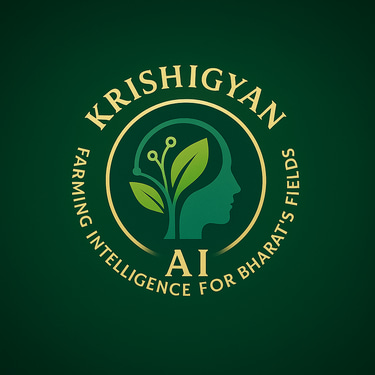How AI Is Helping Farmers Predict Crop Yields More Accurately
AI is transforming agriculture by enabling farmers to predict crop yields more accurately, helping them make better decisions around planning, resource allocation, and market strategies. Here’s how AI is driving this improvement.
HawkEye
5/2/20251 min read
Satellite Imagery & Remote Sensing
Detect nutrient deficiencies or pest infestations early
Estimate biomass and chlorophyll levels
Predict potential yield based on vegetation indices (NDVI, EVI)
Weather Forecasting & Climate Modeling
Rainfall, temperature, humidity patterns
Droughts, floods, or frost events
Microclimate effects on specific crops
Soil Health Monitoring
Analyze moisture, pH, nutrient levels
Predict how these factors influence crop productivity
Recommend targeted inputs to boost yield
Historical Yield & Crop Data Analysis
Understand past trends and anomalies
Simulate expected output based on current variables
Recommend optimal seed varieties, sowing dates, and spacing
Real-Time Crop Monitoring via Drones & Sensors
Crop canopy coverage
Pest or disease outbreaks
Growth uniformity across fields
Market Intelligence & Economic Forecasting
Forecast future prices based on expected yields and global trends
Advise farmers on when and where to sell their produce
Reduce post-harvest losses by aligning supply with market demand
Impact on Farmers
Up to 30% improvement in yield forecasting accuracy
Reduced input costs through data-driven decisions
Better access to insurance and credit due to reliable yield estimates


